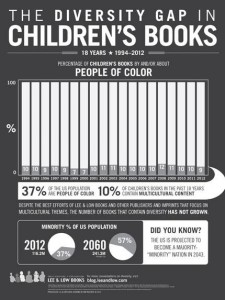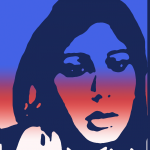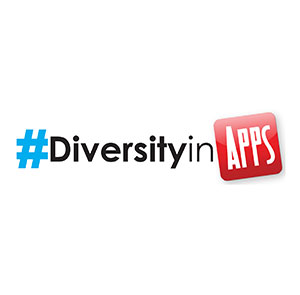
Despite the fact that 37 percent of the U.S. population consists of people of color, only 10% of children’s books published over the past 18 years contain multicultural content. Today’s celebration of Multicultural Children’s Book Day (MCCBD) is a direct response to this diversity gap that exists in the world of children’s books. Started by two blogger moms and reading and play experts, MCCBD — anchored by the hashtag #ReadYourWorld — is meant to “not only raise awareness for the kids’ books that celebrate diversity, but also to get more of these types of books into classrooms and libraries.”
Amidst the flurry of social media activity surrounding today’s celebrations, it would be short-sighted to leave book apps for kids out of the conversation. According to new research from Digital Book World and PlayScience, 93% of children ages 2–13 now read an enhanced or interactive e-book at least once a week.
We need diverse apps just as much as we need diverse books
Recently, my research assistant and I reviewed dozens of apps to create a curated list of 12 Multicultural Kids’ Books Apps Every Parent Should Know for Multicultural Children’s Book Day. Finding the apps in the first place was a bit of a scavenger hunt. There was no single go-to site; no “weneeddiverseapps” collective that is advocating for and consolidating resources around this topic. We ended up culling through hundreds of websites and review publications. We sifted through listings in the App Store and on Google Play. We read research papers on diversity.
Our takeaways:
- The diversity gap that exists in the world of children’s books exists just as much, if not perhaps a bit more, in the world of children’s apps. In their book Diversity Programming for Digital Youth: Promoting Cultural Competence in the Children’s Library, Jamie Campbell Naidoo and Sarah Park acknowledge this diversity gap in children’s apps. They write:
“Because issues of racism, stereotyping, whitewashing, and other social concerns are still hot topics in children’s and young adult literature, we must be similarly cautious about the presence of these issues in digital media. …We have no reason to believe that the digital media industry is any more socially conscious than the children’s book industry. We would like to believe otherwise, but a glance through the iTunes store reveals that most apps are created with a monocultural child in mind — the white, middle-class child. Essentially the “All-White World of Children’s Books” with the aid of digital enhancements how now morphed into the “All-White World of children’s Book Apps.”
- Multicultural apps that introduce kids to diverse cultures and stories are often created by Indie developers with limited marketing resources. Though they may get great reviews, they get lost easily as time goes on because things like App Store algorithms don’t feature titles based on what the marketplace needs; they are based on what the marketplace already wants, sees, and purchases.If it is so challenging for us—eager beaver hunters for diversity and multicultural content—to find it, how much more difficult must it be for parents, teachers, and librarians to be inclusionary when they are building their collections?
- Publishers outside of the U.S. are doing a better job of creating multicultural content. Whether it’s the app Up or Down or the Collins Big Cat series of books, publishers in Europe are offering children bite-sized reading experiences that authentically reflect the world they live in without being didactic about it or without making the interaction into a social studies lesson.
Diversity is not a matter of supply and demand
 The typical media selection behavior of most parents is to dip into a bookstore, Amazon, the App Store, or Google Play and pick out best-seller, featured, or starred review games, books, and apps. And therein lies the rub. Consumers don’t buy diverse and multicultural titles because they are just not that visible. It’s much easier to find syndicated character-driven titles. Media creators don’t create enough diverse books and children’s media because they say that there isn’t enough of a demand.
The typical media selection behavior of most parents is to dip into a bookstore, Amazon, the App Store, or Google Play and pick out best-seller, featured, or starred review games, books, and apps. And therein lies the rub. Consumers don’t buy diverse and multicultural titles because they are just not that visible. It’s much easier to find syndicated character-driven titles. Media creators don’t create enough diverse books and children’s media because they say that there isn’t enough of a demand.
Just because the consumer network is not up in arms about the diversity gap in kids digital diets does not mean that this issue does not need to be addressed. I agree wholeheartedly with MCCBD founders Valarie Budayr from Jump Into a Book and Mia Wenjen from Pragmatic Mom who propose that embracing diversity “will lead to acceptance, empathy, and ultimately equality.” Our kids have the right to interact with media that reflects the diversity that exists in our societies today. And, we have the responsibility as media producers to produce content that dispels cultural misconceptions and break stereotypes perpetuated by mainstream media about cultures.
So, what makes an app truly diverse? In July 2014, #storyappchat focused their weekly Twitter meeting on the topic of “Diversity in eBooks, Apps, and Self-Publishing.” Such conversations set a valuable baseline for defining and evaluate the diversity in the world of children’s apps. So do the resources that are being shared amongst communities of librarians, academics, and children’s media producers and reviewers such as Common Sense Media and Digital Storytime.
All of these advocates for diversity and multiculturalism agree that:
- Diverse apps should allow kids to see characters different from themselves and different from each other interacting.
- Diverse apps should feature stories and characters that are multicultural.
- Diverse apps should share ideas, stories and information about cultures, race, religion, language and traditions.
- Diverse apps should offer kids new ways to connect to a diverse and richer world.
- Diverse apps can help kids learn to read and learn in their home language.
- Diverse apps should be created by a diverse team.
- Diverse apps should feature characters who represent the diversity in a classroom or community.
- Diverse apps should educate kids about how different families and ethnicities live.
- Diverse apps can also mean the inclusion of atypical kids , i.e. children with with physical, emotional, intellectual disabilities.
- Diverse apps should not demonstrate “token” diversity; kids of different cultures should not just be placed in a story for the sake of checking off the “diversity” box.
- Diverse apps allow for race, ethnicity, gender to be the secondary story.
Lessons from the print publishing world
The question before the publishing world right now is no longer whether we need more diverse and multicultural books. The challenge is how to get more of them into the hands of little ones, into classrooms, into libraries, and most importantly, onto the printing press. A similar challenge lies ahead for creators of digital media.
Creators of digital kids media can learn a great deal from the a collective of publishing change agents who came together to create We Need Diverse Books last spring. From a #weneeddiversebooks hashtag that went viral on Twitter to a hugely successful Indiegogo campaign that raised over $180,000 to its set up as a nonprofit to advocate for diverse, non-majority narratives in children’s literature through grants, programs, and publications, We Need Diverse Books has come a long way.
With a starting definition of the standards for diversity, what if our mutual communities of app developers, design studios, funders, publishers, producers, game designers, and distributors all put our heads together to make a commitment to mind the diversity gap?
We could set goals and make sure to include more diverse characters and cultures in our products—even the most commercial ones that have nothing to do with culture or being global citizens. We could create an open source clearinghouse that shares resources and tracks diversity. We could commit to filling up the wells of the App Store and Google Play with authentic diverse digital media that exposes kids not just to characters of other colors and cultures, but also to diverse cultural ways of thinking and ways of problem solving.
So … we have a working definition of diversity. We have a list of to-do’s. We have a great working model for the power of collective action and awareness from We Need Diverse Books.
Now let’s get to work, shall we?
 Sandhya Nankani is the founder of Literary Safari, an Indie publisher and content developer which develops K-12 print and interactive content that aligns to 21st century skills and standards and the Common Core. Literary Safari recently published Dentist Bird: A West African Folktale, the first in its series of global folktale-inspired game-rich book apps that are designed to introduce elementary aged children to the diversity of world literature.
Sandhya Nankani is the founder of Literary Safari, an Indie publisher and content developer which develops K-12 print and interactive content that aligns to 21st century skills and standards and the Common Core. Literary Safari recently published Dentist Bird: A West African Folktale, the first in its series of global folktale-inspired game-rich book apps that are designed to introduce elementary aged children to the diversity of world literature.



